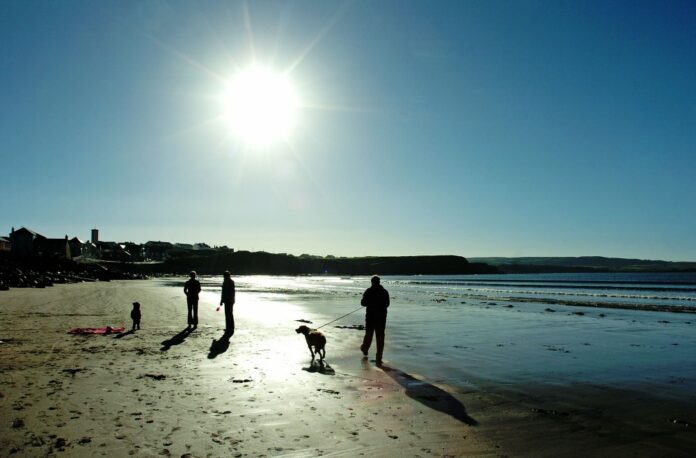CLARE Water Safety Committee has produced a new safety leaflet for Lahinch beach, which has been circulated to tourism related businesses for the benefit of visitors and locals to the west Clare resort.
People are advised in the leaflet to always swim between the red and yellow flags. If the lifeguards can’t see swimmers, they can’t help them.
Swimmers are warned not to enter the sea when the red flag is up because it is too dangerous to swim. If unsure, people are urged to ask a lifeguard or seek local knowledge.
People can also refer to Clare County Council’s Facebook page for advice about the conditions at other lifeguarded beaches.
Children should be kept under constant supervision when in or near the water.
Entering and leaving the water at full tide can be extremely dangerous due to the risk of impact on beach rocks.
People should check tide times at the lifeguard station or online. In Lahinch, the tide pushes water on to the rocks three hours before and after the high tide time.
Do not swim during these hours. Stormy weather or big waves will enhance the associated dangers.
Waves can cause swimmers to fall or move them out of their depth and may also cause rip currents. Swimming in big waves is only for experienced swimmers, and should always be between the red and yellow flags.
Rip currents develop due to waves and windy conditions, and move water away from the beach.
Avoid rips by staying out of the water when the red flag is flying, or when there are rough conditions.
If caught in a rip, stay calm and signal or call for help. Go with the current and towards the side.
In an emergency, stay calm, call for help and dial 112 or contact a lifeguard. Provide emergency care, open the airway and give compressions, if able.
Stay with the victim until more qualified help arrives.
Weaver fish are small fish that bury themselves in the sand, at or near low tide. Their sting, caused by stepping on them, is best avoided by wearing booties. If stung, you may experience sharp pain.
To alleviate this, immerse the affected area in the hottest water you can bare.
Contact a lifeguard or seek medical advice if the pain lasts or becomes unbearable.
A jellyfish sting is most often just an irritation, but can sometimes be painful. If stung, rinse the affected area with sea water, and avoid scratching. Seek medical attention if the pain continues.
by Dan Danaher

